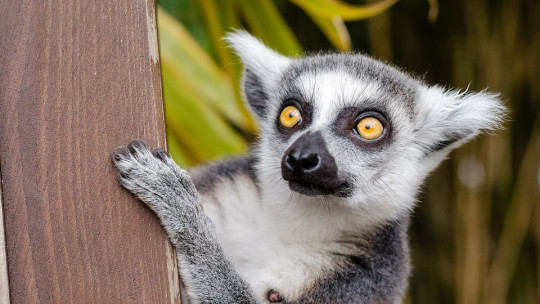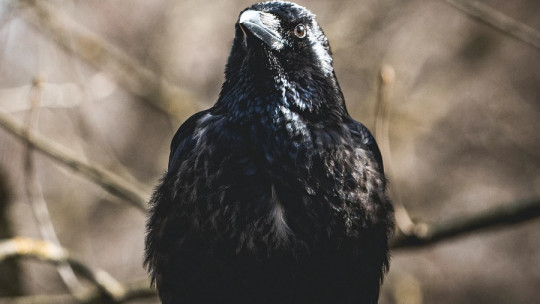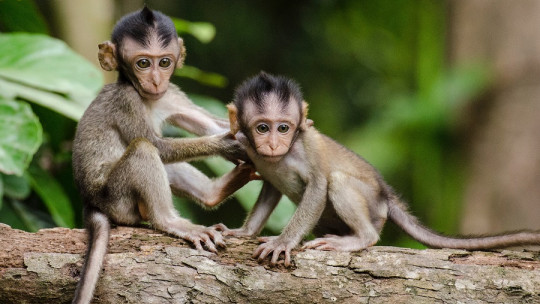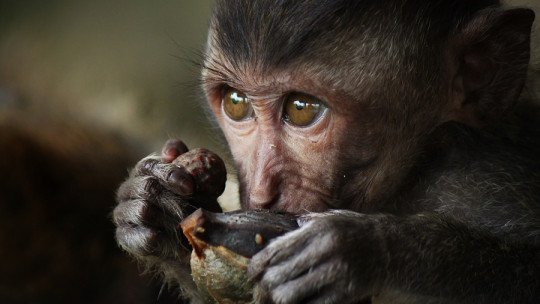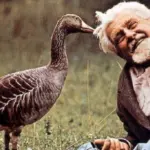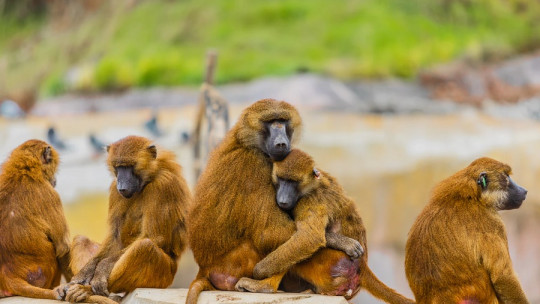The human being is, without a doubt, an animal that entails great mysteries. We observe our species astonished, incredulous at all the good and bad that we are capable of, feeling like a “bug” different from what lives in nature. And also, why not say it, as the most important.
This vision, known as anthropocentrism, has been part of our lives for many years , promoted by different religions, and has prevented us from “assuming” our primitive and natural side. Or what is the same, our animal roots, which come from a lineage of enormous primates to which we are united by an inexorable kinship.
In recent years, however, ideas about the evolution of species have begun to establish themselves in popular culture. With them, new questions have also arisen to think about: are human beings as free as they believe? To what extent has evolutionary history conditioned our decisions? Are we, perhaps, just another animal?
These questions, among many others, are attempted to be answered from human ethology. Despite being a relatively recent discipline, it has already taken its place among the sciences that are responsible for addressing the human fact. In this article we will talk about what it is, and on what bases it builds its extensive body of knowledge.
What is ethology?
The word ethology comes from classical Greek, and more specifically from the terms “ethos” (habit or custom) and “logos” (knowledge or science). It is, therefore, a multidimensional discipline (biology, genetics, medicine, psychology, etc.) whose purpose is the scientific approach to the behavior of animals in their natural environment, as well as the description of their interactions with other subjects of the group or with its physical environment. For all these reasons, theories such as those of evolution are usually used, based on sexual reproduction and adaptation to the environment.
Ethology is separated from psychology not only in its perspective of study, but also in the fact that its scope of knowledge focuses solely on behavior, ignoring many of the internal processes that the observed subject could be “reproducing” in a Given moment. Its explanatory power lies in the phylogeny, that is, in the evolutionary history of the species; being able to explain any individual action in light of the shared experience of the group to which one belongs.
Ethology as a discipline It was founded by the Austrian doctor Konrad Lorenz (whose work concluded in a relevant doctoral thesis in the field of zoology) and by the Dutch zoologist Nikollas Tinbergen, at the end of the 1930s. Their work in the Ethological School of Animal Behavior led them to achieve the Nobel Prize (shared) in 1973, for his crucial contribution to the knowledge of mother-child relationships and for the detailed description of the phenomenon of “imprinting”, which would later be added to the sciences of human behavior (with the construct of attachment ).
In the early days of ethology, it focused solely on field (live) research on non-human animals. As time passed, and especially at the moment in which the human being descended from the pedestal that he had once occupied (to understand himself as another being of nature), a new branch emerged in charge of the study of our species. . In this way, and as happened with psychology and/or philosophy, this area of knowledge made its object of study coincide with the subject who observes it.
The branch of human ethology was born at the beginning of the 70s, by Irenäus Eibl-Eibesfeldt , and focused fundamentally on social dynamics and the definition of behavioral repertoires that people could use during their exchanges with the environment. He inherited his interspecies comparative method from classical ethology, such that primates would be the creatures chosen for analysis (at least regarding elementary gestures, not communication or symbolization), emphasizing the behavioral overlap with our ancestors. .
In short, human ethology would start from the same premise as the original discipline; and its purposes would be the study of the stimuli (both internal and external) that are associated with the beginning of a motivated behavior, the analysis of the usefulness of such actions, the exploration of the origin of the habits that facilitate correct adaptation and the assessment of outcome according to reproductive or survival criteria. Likewise, all of this would be carried out taking into account the evolution of the species itself (phylogeny) and the unique development of the subject (ontogeny).
What is human ethology?
human ethology seeks to know what is, without a doubt, the most complex animal on the planet. And this is so, above all, due to our ability to reason and assume awareness of ourselves, which is made possible by the extraordinary development of the neocortex (the most recent of all brain structures in an evolutionary sense). As a direct consequence of this, our species experienced, at some point, an authentic cognitive revolution and became the first capable of coexisting in spaces where thousands or millions of individuals lived. The social structure of primates was quickly surpassed, and laws or norms emerged to regulate interactions.
Both phenomena, at least in their magnitude, are unique to the human species and explain the relevance of a separate branch of the thick epistemological trunk of ethology. Even so, they share their roots, soBoth are planted on the ground of the evolution of species that Darwin proposed. Through this theoretical prism we aim to account for human phenomena, being sensitive to the inheritance of our most remote ancestors and the biological sacrifice for their survival. Issues such as genetic kinship, reproduction and instincts are at the base of its postulates.
Because the best way to understand the concept of human ethology is through examples, we will now explain how it interprets certain phenomena. It is important to keep in mind that, given the breadth of its field of study, it must necessarily draw on progress in related sciences (such as sociology, psychology and biology).
Some examples
In order to clarify what the objective of human ethology is, it is convenient to resort to some simple examples of the many that would be possible. From now on, four almost universal assumptions will be presented in the life of every individual, and the way in which this science interprets them under the theoretical models that support it.
1. Life goal
Most of us like to believe that our lives have a purpose , and every day we strive precisely to achieve it and be able to feel satisfied. These objectives can be very different, and fluctuate over time according to the needs of each evolutionary period, but in any case they provide us with a deep meaning that goes beyond the mere fact of existing for the sake of existing. Achieving a certain social position, reaching the top of a profession, building a happy family or just feeling proud of having tried; are common examples of life goals that people set for themselves.
However, from an ethological perspective, all of them can be summarized in one: the transmission of our genes , which has been coined as reproductive success. At a metaphor level, living organisms would only be a physical vehicle from which one’s genes would be maintained over time, this being the ultimate goal of existence. It is perhaps an unromantic vision of a reality that has inspired thinkers of all time, but it proposes a useful framework to understand why we act as we do in certain circumstances.
This reproductive success, or biological efficiency, can be expressed in two different ways : the direct and the indirect. The first depends on the sexual activity itself, through which the genetic baggage is extended to the lineage (children), while the second goes one step further and includes the reproduction of those with whom we share kinship. Both are, for human ethology, the most basic of the motivations that all people harbor to live. It is for this reason that it tacitly conditions many of our actions, even though we are not aware of it.
2. Social relations
Human ethology addresses issues such as altruism or prosocial behavior, which are frequently displayed during relationships between two individuals, especially when they belong to the same family. This way of acting would promote the survival of the species by “resolving” the difficulties of the members of the collective , which sometimes come to compromise life. For many years it was thought that this explanation was valid to understand why we help each other, but everything changed with the theory of The Selfish Gene (1976), published by Richard Dawkins. It was a twist.
This postulate presented an innovative idea to the scientific community, which quickly spread to human ethology and was established at the very heart of the discipline. He posited that acts that benefit groups lack adaptive value, while selfish ones would be effective in promoting genetic continuity. Acting in such a way (centered on oneself) would be more likely to provide oneself with the essential resources to survive, but… why do so many people continue to take care of others?
This theoretical model states, for example, that Parents may be able to give their lives for their children because it depends on them to maintain their genetic legacy in the future. Thus, by privileging their safety over one’s own, the indirect biological efficacy (which we talked about in the previous section) would be reinforced. This view of things applies to many animals, such as primates or cetaceans, and explains why they tend to group into small groups based on consanguinity.
In the case of human beings, it is considered that, although at some point in their extensive evolutionary history it may have been a fundamental explanatory element for their survival, currently its usefulness is questionable. And this is so because our brains allow an unparalleled degree of reasoning, which usually manifests itself in cultural constructions that transcend the limitations of biology and genes, daring to trace paths where other beings only allow themselves to be carried away by the intense flow of biology. All these questions continue to be the subject of heated debates among ethologists today.
3. Interpersonal attraction
Feeling attracted to someone, or even being in love, are two experiences that (if reciprocated) bring enormous happiness. At the moment of feeling romantic curiosity about another person, the truth is that There are many variables that come into play, from what he is physically like to character or material resources. And every human being has his priorities when choosing a partner, and makes them preconditions for mixing his chromosomes with someone else’s.
Even so, a large percentage is able to recognize that “physique” is basic. Thus, it is not strange to hear statements like “it has to get in my eye” or “I have to like what I see” when investigating what reasons are weighed when choosing someone. Although the majority believes it, voices are raised that accuse those who express it out loud of being superficial. But does such a question make sense from the prism of human ethology? Obviously, the answer is a resounding yes.
Certain physical attributes, such as height or muscle and lipid distribution, allowed in ancient times to infer the genetic quality of the person who held them. The firm buttocks, broad chest, or stout arms indicated that the subject had athletic qualities appropriate for hunting, which would allow food to be available even in times of greatest calamity. Wide hips and generous breasts were, in turn, an unmistakable sign of fertility. All of them became desirable traits in the eyes of women or men, because they facilitated the replicative will of the genes. In some way, they are still valid today.
4. Fall in love
Falling in love has also been an object of interest for human ethology. A large part of the population has felt like this at some point in their lives: difficulty stopping thinking about the other, need to share time with them, feeling of being “distracted”, excitement at the idea of meeting, desire to have a physically intimate contact, etc. And although it is a wonderful feeling, ethology has understood it as a mechanism to promote contact between two individuals the time required for them to reproduce. Thus, in fact, this sensation usually fades after a few years, leaving behind a much more restrained and rational love.
5. Attachment
One of the most important contributions of ethology to the relationship between parents and their offspring is that of imprinting. Is about a link that is drawn between two living beings in the moments close to the birth of one of them , from which both will seek a physical closeness that facilitates the survival of the most vulnerable. It has been observed in many animal species, especially birds. We can all imagine, right now, the bucolic scene of a “mother duck” crossing a path or highway with her chicks. Everyone moves in a straight line and united, forming a compact group that prevents getting lost.
Well, the phenomenon has been described in humans through attachment. This concept was formulated by John Bowlby, an English psychiatrist who studied how human offspring relate to their attachment figures during the first years of life, in search of essential security that allows the exploration of the environment and the development of behaviors such as symbolic play. Attachment is key in understanding the mother-child relationship, and it emerges as a phenomenon that conditions how we interact with others in adulthood (although it can be modulated through other constructive experiences that are forged beyond childhood). .
All these examples are just a discreet brushstroke of the very diverse postulates that are emerging from human ethology in recent years, and that remind us of something that we should never have forgotten: that we are a primate with a very particular brain, but not a being alien to nature or the forces that evolution exerts on everything that is alive.


